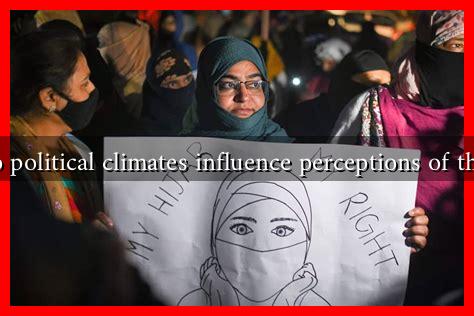-
Table of Contents
How Do Political Climates Influence Perceptions of the Hijab?
The hijab, a traditional headscarf worn by many Muslim women, has become a focal point of debate in various political climates around the world. Its perception is often shaped by the prevailing political narratives, cultural contexts, and social attitudes. This article explores how different political environments influence the way the hijab is viewed, highlighting case studies, statistics, and the broader implications for society.
The Hijab in Western Political Contexts
In many Western countries, the hijab has been at the center of discussions surrounding immigration, integration, and national identity. Political climates that emphasize secularism and cultural homogeneity often view the hijab with suspicion.
- France: The French government has implemented laws banning the hijab in public schools and other state institutions, citing secularism as a core value. This has led to significant public debate about religious freedom versus national identity.
- United States: In the U.S., perceptions of the hijab have been influenced by the post-9/11 political climate, where Islamophobia surged. A 2017 report by the Pew Research Center found that 48% of Americans viewed Islam unfavorably, which often extends to negative perceptions of Muslim women who wear the hijab.
The Hijab in Middle Eastern Political Contexts
In contrast, the hijab can be a symbol of national pride or political resistance in various Middle Eastern countries. The political climate in these regions often dictates whether the hijab is embraced or rejected.
- Iran: Following the 1979 Islamic Revolution, the hijab became mandatory for women, symbolizing the state’s Islamic identity. This has led to a complex relationship where the hijab is both a symbol of oppression and a marker of cultural identity.
- Turkey: The political landscape in Turkey has shifted over the years, with the hijab transitioning from a banned symbol in public institutions to a celebrated expression of religious identity under the current government. This shift reflects broader changes in the political climate and societal attitudes towards Islam.
Case Studies: The Impact of Political Rhetoric
Political rhetoric plays a crucial role in shaping public perceptions of the hijab. Leaders and policymakers can either reinforce stereotypes or promote understanding through their discourse.
- Germany: In recent years, German Chancellor Angela Merkel’s government has taken a nuanced approach to the hijab, advocating for integration while also addressing security concerns. This has led to a mixed public perception, where some view the hijab as a barrier to integration, while others see it as a personal choice.
- India: The rise of Hindu nationalism has led to increased scrutiny of Muslim practices, including the hijab. In 2022, a controversy erupted in Karnataka over schoolgirls wearing hijabs, highlighting how political climates can exacerbate communal tensions and influence public opinion.
Statistics and Public Opinion
Surveys and studies provide insight into how political climates shape perceptions of the hijab. For instance, a 2020 study by the Institute for Social Policy and Understanding found that 60% of American Muslims who wear the hijab reported experiencing discrimination. This statistic underscores the impact of political narratives on individual experiences.
Moreover, a 2021 survey by the European Union Agency for Fundamental Rights revealed that 62% of Muslim women in Europe felt that their religious identity was a barrier to social acceptance, further illustrating how political climates can influence personal experiences and societal attitudes.
Conclusion: The Hijab as a Reflection of Political Climate
The perception of the hijab is deeply intertwined with the political climate in which it exists. Whether viewed as a symbol of oppression, a personal choice, or a cultural identity, the hijab reflects broader societal attitudes shaped by political narratives. As political climates continue to evolve, so too will the perceptions of the hijab, making it essential for societies to engage in open dialogues that promote understanding and respect for diverse identities.
In summary, the hijab serves as a powerful lens through which to examine the intersections of politics, culture, and identity. By understanding these dynamics, we can foster a more inclusive society that respects individual choices while navigating the complexities of cultural expression.
For further reading on this topic, you can explore resources from the Pew Research Center and the European Union Agency for Fundamental Rights.

